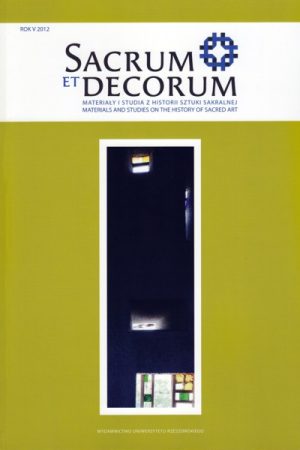Wall-paintings in the Ukrainian Greek Catholic Church of Christ Lover of Mankind in Zhovkva. History of the absidal scene of The Ascension of Our Lord and its iconographic analysis (selected elements)
Keywords:
Julian Bucmaniuk, Zhovkva, Ukraine, 20th c, Eastern church art, mural painting, iconography, Sacred Heart of JesusAbstract
The purpose of the article is to present the history of the mural paintings in the Basilian Church of the Sacred Heart of Jesus (today known as Christ Lover of Mankind) in Zhovkva and to perform an iconographic analysis of selected elements of the absidal scene of The Ascension of Our Lord, which contains elements clearly related to the temple’s name. The Dobromyl Reform (1882–1904) of the Greek Catholic Basilian order contributed to intellectual revival and the restoration of its Galician monasteries. Among the modernization projects carried out at that time, special attention should be drawn to the murals in Zhovkva, painted by a young Ukrainian painter, Julian Bucmaniuk (1885–1967). The decorations were created in two stages: 1911 (the Chapel of the Protection of the Mother of God) and 1932–1939 (interior of the church). The polychromes of the chapel address Marian themes. The iconography of the murals, in turn, drew on the Byzantine model developed in the 9th and the 10th centuries, with its typical three motifs; the theophanic-doxological and prophetic motifs are evident in the area of the dome, sanctuary, and the eastern bay of the naos, while the evangelical-apocryphal motifs dominate in the kriloi (dodecaorton) and the naos. These are supplemented by two additional themes, the hagiographical and the historical. New elements (apart from the updated historical scenes) include the representations of the Sacred Heart of Jesus, the most intriguing of which are the absidal image of Christ the Pantocrator with a heart in his bosom in the scene of The Ascension of Our Lord.Downloads
Downloads
Published
How to Cite
Issue
Section
License
Copyright (c) 2012 Sacrum et Decorum

This work is licensed under a Creative Commons Attribution-NonCommercial-NoDerivatives 4.0 International License.
In line with the Open Access policy, authors retain full copyright to their articles – without restrictions.
Authors can deposit their articles in a repository of their choice.


